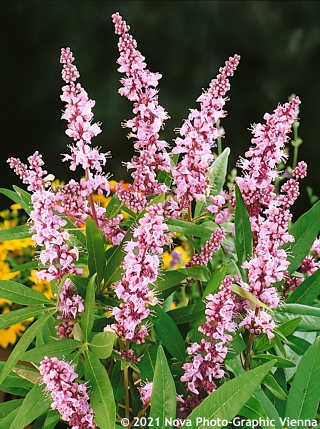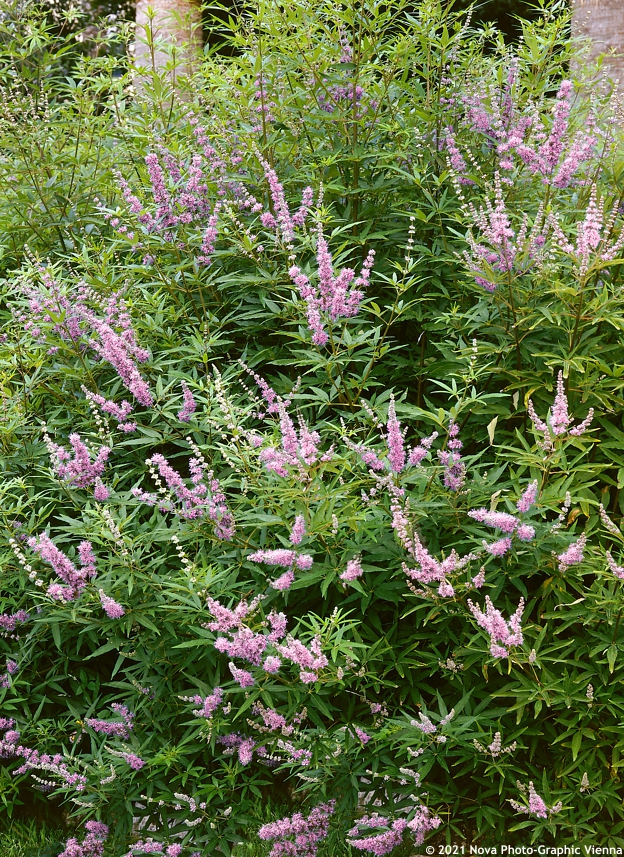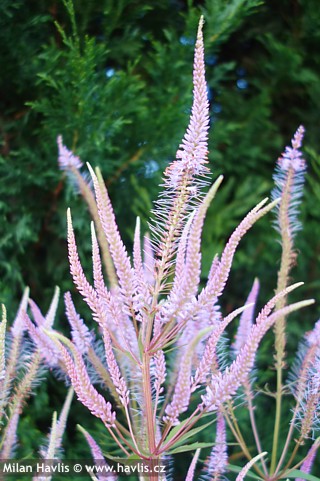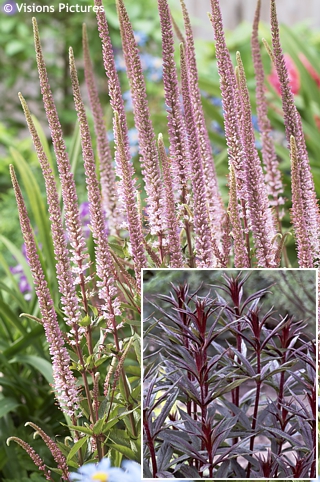Vitex agnus-castus 'VO7-SC-OP-4' PINK PINNACLE™ chaste tree
size/type
medium-sized shrub,medium-sized shrub
usual height
2-3m
usual width
2-3m
leaves
deciduous broadleaf
colour of leaves
flowers
showy
colour of flowers
blooming time
August-October
location
full sun
soil type
any (acidic to alkaline)
soil moisture requirements
evenly moist but well-drained
USDA zone (lowest)
7 (down to -23°C)
winter protection
for zone 5+6

for zone 7

categorized
Vitex is surprisingly a large genus of about 250 species spread almost all around the globe. In our climate we know very little about it because most of its species are subtropical plants but there are a few that can cope with our zone 6 winters easily and make beautiful flowering shrubs or exceptionally small trees. Chaste tree is a one of them and comes from areas ranging from the Mediterranean to Central Asia. And it is not just beautiful, it has long been used as a strong medicinal plant, especially in homeopathy.
It is an airy, large to mid-sized shrub with leaves that slightly resemble marijuana. They are deciduous, palmately divided into 5 or 7 leaflets, mid green to grey-green, slightly hairy, and fragrant. In fact, their fragrance is stronger than that of the flowers. Those are tiny, and are composed in upright, narrow, terminal panicles, and are often mistaken for butterfly bush flowers. They appear from mid to late summer and continue until mid-autumn thus prolonging the flowering season till the last sunny and warm days of October.
It is an airy, large to mid-sized shrub with leaves that slightly resemble marijuana. They are deciduous, palmately divided into 5 or 7 leaflets, mid green to grey-green, slightly hairy, and fragrant. In fact, their fragrance is stronger than that of the flowers. Those are tiny, and are composed in upright, narrow, terminal panicles, and are often mistaken for butterfly bush flowers. They appear from mid to late summer and continue until mid-autumn thus prolonging the flowering season till the last sunny and warm days of October.
Description of the plant:
PINK PINNACLE™ is an American chaste tree variety bred by Carol Robacker by using radiated seeds of Shoal Creek variety in 2006. The result is a clear pink flowering variety with slightly shorter growth and dense habit. Currently it is supposed to be the best pink variety on market. US patent No. PP27,374 was granted in 2016.I must admit I am fascinated by everything about this plant. Apart from its showy flowers I love its texture. Its dramatically pointed leaves look rather exotic and though there is plenty of them the plant still remains airy and fluffy, and if you place it next to a hard-leaved, evergreen shrub typical for the Mediterranean it significantly lightens up the landscape as it moves in the slightest breeze.
Chaste tree grows fast and is often pruned hard same as other summer-flowering shrubs e.g., panicle hydrangeas, bluebeards, or the above-mentioned butterfly bushes. In early spring after all frosts cut off some 80% of previous year’s growth which will result in a bushy, many-branched shrub. Another option is training it into a multistemmed shrub with clear lower stems that will thicken with age, and a dome-shaped canopy. You will need a slightly older specimen to do that. Choose a framework of 3-5 strong branches from the ground and remove all lateral branches alongside up to at least one meter or even higher. Do this also in spring and when needed trim the crown lightly just to make it look good.
Grow chaste tree solely in full sun in virtually any free-draining soil. It can cope with summer drought but will most likely die in boggy ground. In respect of its origin, in frost-prone areas we suggest growing it in sheltered locations. Fertilizing is not needed. The hardiness of vitex agnus-castus may vary with varieties and PINK PINNACLE™ has so far performed well down to -23 °C (USDA zone 6). However, it can also be grown in zone 5 as a semi-woody perennial if the top is killed by frost as it readily regenerates from the lower framework or even from the roots.
Last update 21-11-2021
WANT TO TRY A SIMILAR PLANT?


















